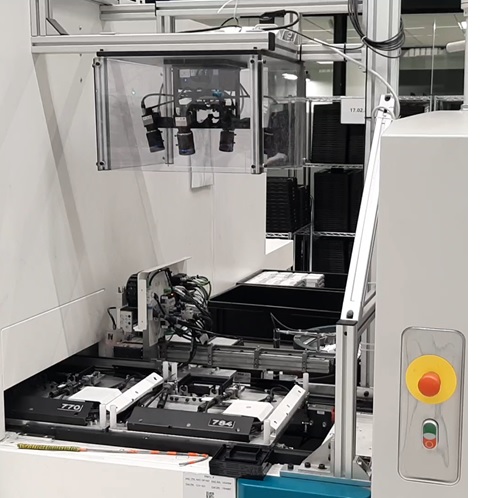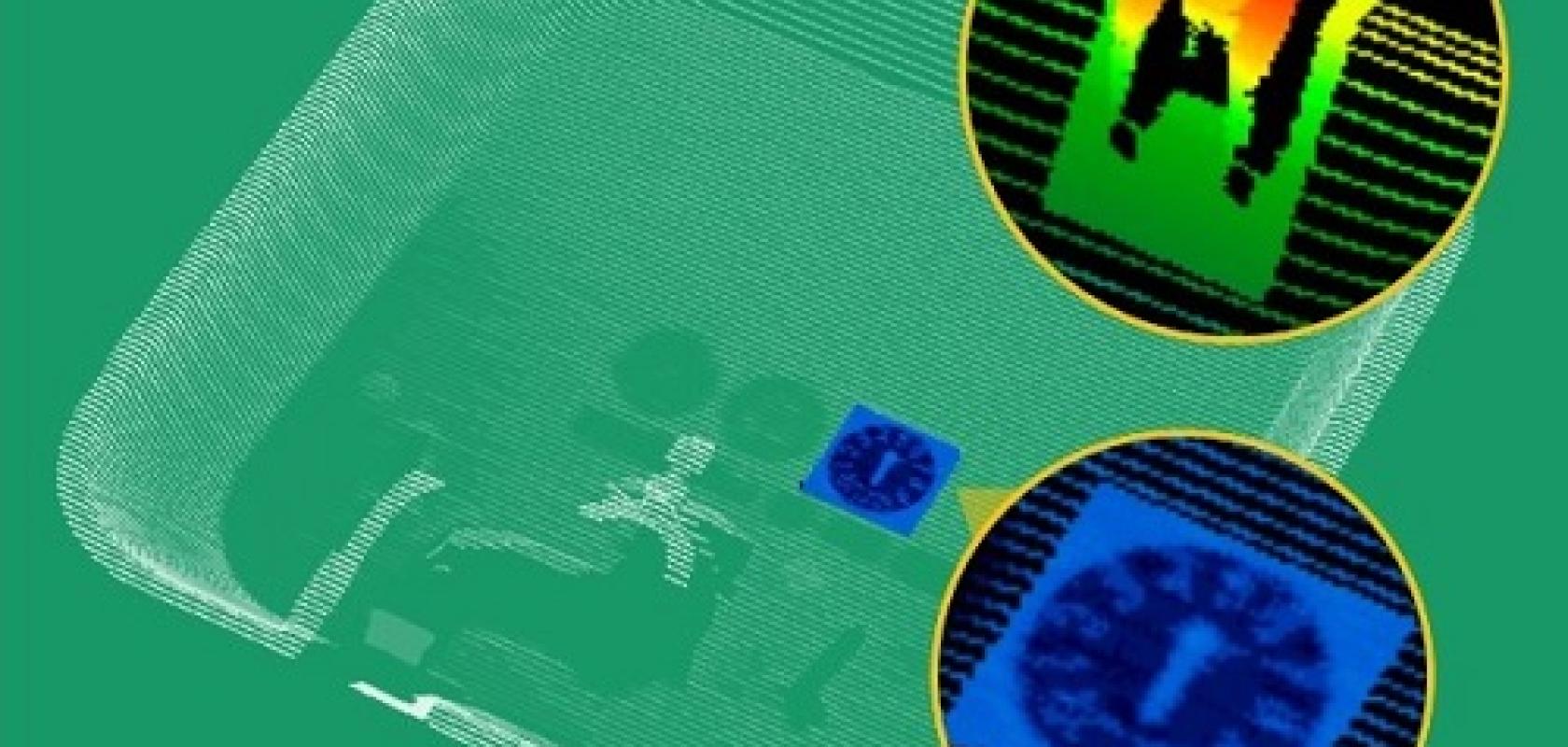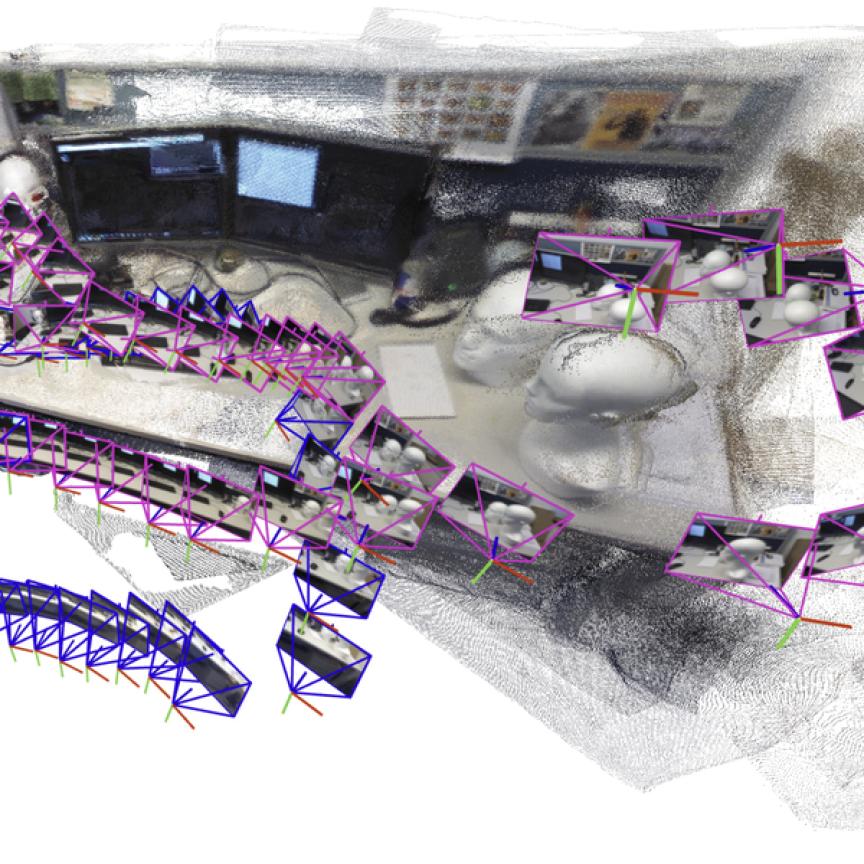Saccade Vision is to launch its first MEMS-based scanning 3D vision product at the Automatica trade fair next week.
The start-up, which was founded in 2020, has completed a number of pilot projects with integrators and end-customers, and has made post-pilot sales.
Saccade Vision’s system uses a micro-electromechanical system (MEMS) laser illumination module as a light source that is able to scan in multiple directions. It’s similar technology to that used in solid-state lidar modules for autonomous vehicles.
Not only can the direction of the scan be optimised so that the part doesn’t have to be rotated to get a different viewing angle, but the system can vary the resolution, scanning the entire part at low resolution and then honing in on certain areas at very high resolution.
Saccade says its triangulation approach achieves up to 10 times higher resolution than traditional 3D sensors, offering the equivalent of 100 million 3D points for regional scanning.
The company is focusing on critical dimension measurements and 3D inspection for precise manufacturing. Speaking to Imaging and Machine Vision Europe, Alex Shulman, CEO and co-founder of Saccade Vision, reported that the firm has had a system running non-stop on a fully automated assembly line for the last six months. The camera system has already inspected more than one million units in that time, where each assembly arrives for inspection on the line every 10 seconds. ‘We were able to identify defects that the customer wasn’t aware of,’ Shulman said. This is possible because of the system’s ability to optimise the scan - if a scan reveals something that might be a defect it can focus on that area in higher resolution in the next scan, all without increasing the scanning time or computation time.

Saccade's system installed on an automated assembly line. Credit: Saccade Vision
Saccade is working with the robot software supplier, Euclid Labs, on a number of projects. Euclid is finalising an installation in a metal bending machine, with the aim to provide closed-loop control of the bending process. The Saccade vision system measures the angle of the bend and feeds that data back to the bending machine to correct for any variation in the process.
Other use cases include measuring critical dimensions of plastic injection moulded parts, along with making measurements of highly reflective pipework, an object that other 3D imaging methods would find difficult to inspect.
As a demonstration, Shulman showed the system generating a point cloud of a highly reflective aluminium bowl. ‘This is a really difficult part to scan. Even with the naked eye you see so many distortions caused by reflections,’ he said.
The point cloud from a traditional 3D scan of this object would have a lot of information missing because of the reflections. ‘With our system we can make local scans with different parameters to fill in the gaps in the point cloud,’ Shulman continued. ‘This is how we reach full point cloud coverage without almost any dropouts.’
Generating a point cloud of a reflective aluminium bowl
Saccade Vision has plans for new features, and its technology is also interesting for unsupervised machine learning. The first new feature will be CAD-to-inspection software, called SaCAD, which the company expects to have as a limited release at the end of the year.
SaCAD will allow the customer to select the areas of inspection and the measurements on the CAD model of the part. From this, the system will automatically create all the relevant inspection parameters for those specific measurements.
This will cut development time because, by analysing the CAD model, the system configuration can be prepared before installing it. ‘You can do many things in parallel rather than implementation being sequential,’ Shulman explained.
The potential for unsupervised machine learning for point clouds - which normally requires a lot of computational power because of the size of most point clouds - is because Saccade’s point cloud can be optimised by region and resolution. ‘We have a lot of advantages here,’ Shulman commented.
Saccade is also working on an application for CNC machining, which Shulman said is a very difficult inspection and measurement task. The company has an installation at Schunk’s CoLab application laboratory inspecting CNC parts.
At the moment, Saccade is selling in Europe and has preliminary pilots in the Asia-Pacific region. It will be exhibiting in hall A4 booth 218 at Automatica; later in the year it will be at the metal processing shows, EuroBlech and Fabtech, and the Vision show in Stuttgart.


